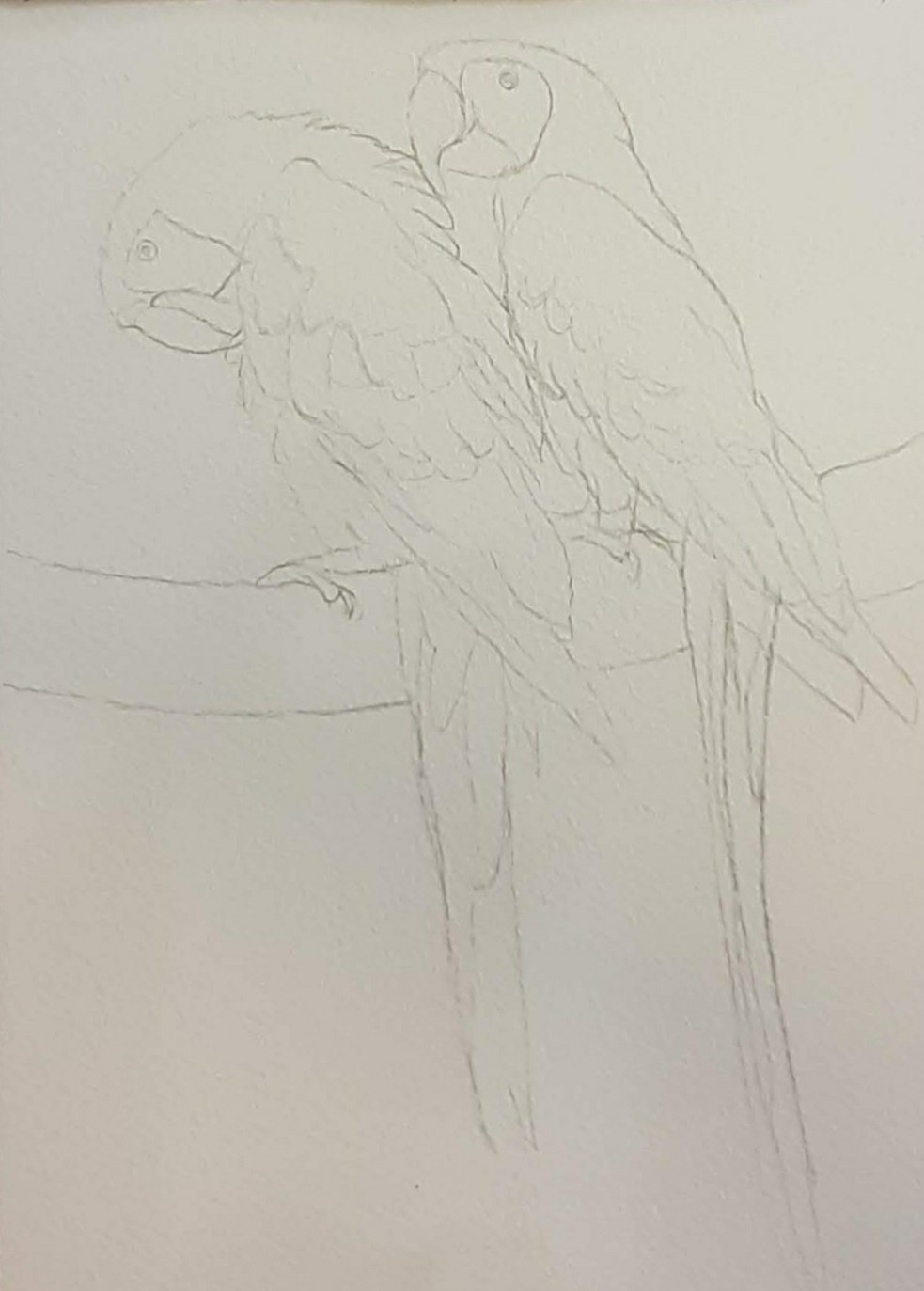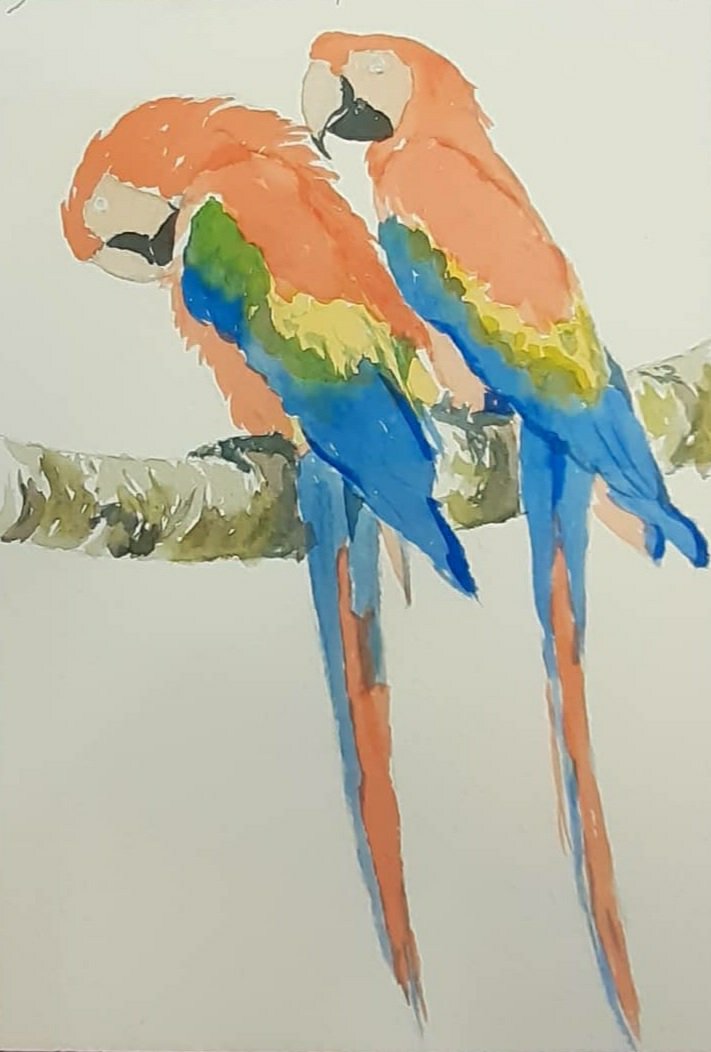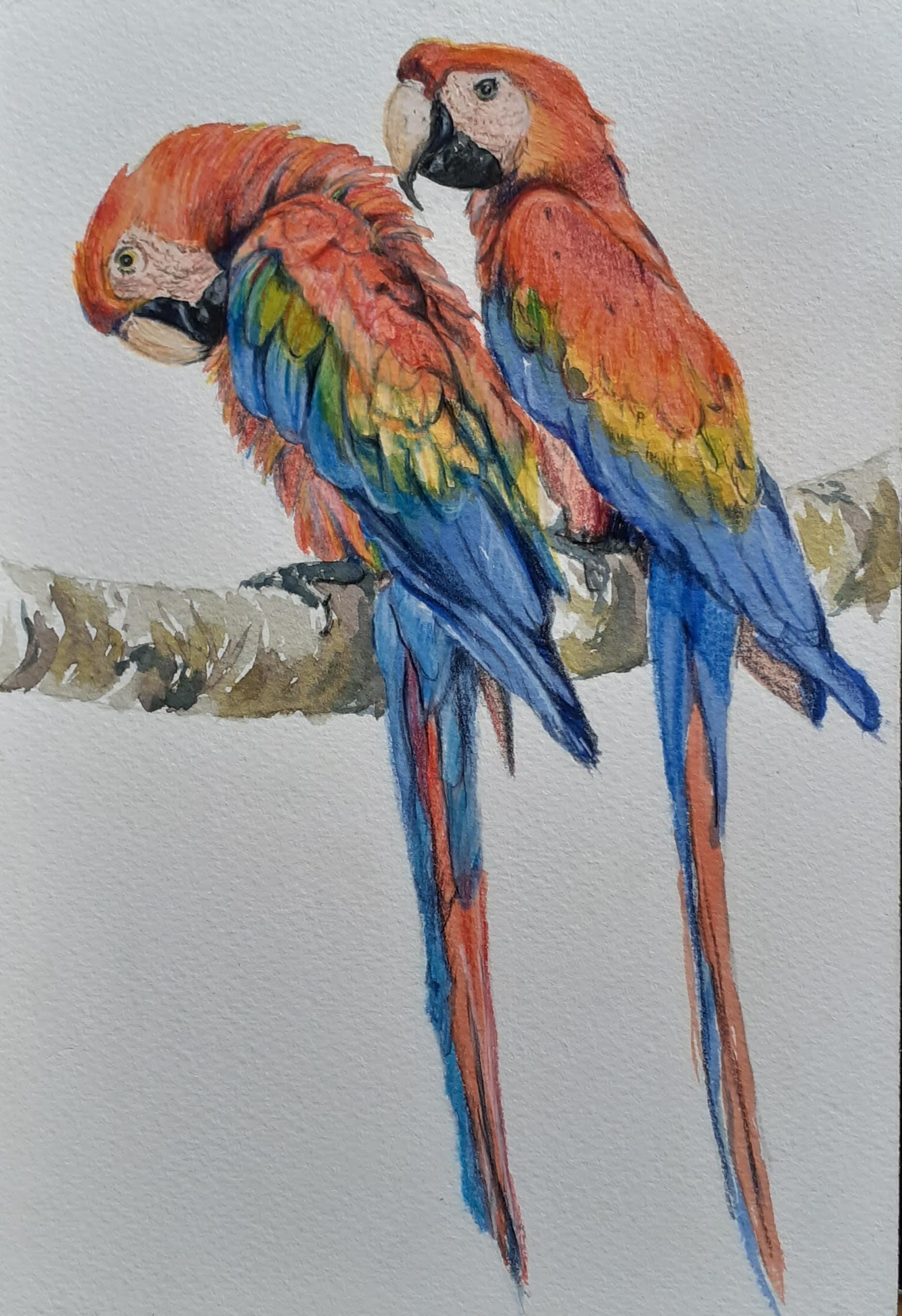This blog has been static for a long time, so time to catch up.
This first work is the last piece I completed before the full lockdown in March. Drawn at the Ardington School of Craft in Jonathan Newey’s class on drawing wildlife with watercolour and coloured pencils. He advocated use of water soluble pencils but I have never got on with them, so I used standard non soluble pencils. First a pencil outline. I am unsure of this, as it is little more than tracing, which I don’t like, but the result is good. Then a broad painting with watercolour washes. This gives a very basic colour scheme. Then overdrawn with colour pencils. This really worked. It gives a greater depth of colour than just using the pencils by themselves. You can also manipulate the colour endlessly. I was very pleased with the result. Happy to say, these birds now live with a good friend in Kuala Lumpur in Malaysia. Happy birthday Carol!
Lockdown started just days after this was finished, but it is a technique I have used at home several more times.

























































